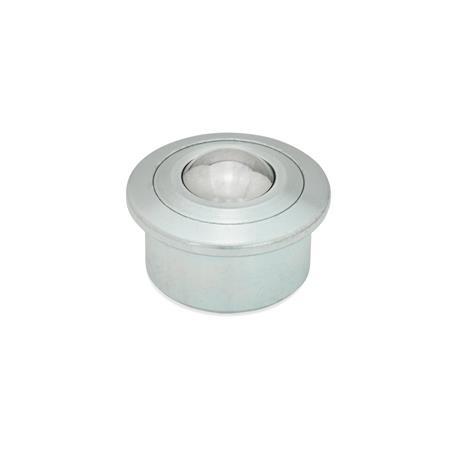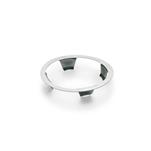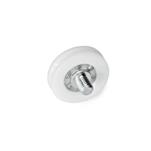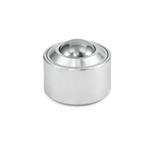Product description
Ball transfer units GN 509.1 are elements which are used in conveyor technology. They allow effortless displacement or rotation of even heavy loads in any direction.
The diameter d2 features a taper in the upper area, beneath the flange, which allows it to be easily and firmly installed.
Specification
Housing steelSBL
- Turned
- Zinc plated, blue passivated
- Ball steel, plain
Housing steelSNI
- Turned
- Zinc plated, blue passivated
- Ball stainless steel AISI 420C
Housing stainless steelNNI
- AISI 420B
- AISI 303 (only size 15)
- Ball stainless steel 420C
RoHS
Accessory
Spring Rings GN 509.3 (retainers for ball transfer units)
On request
Plastic ball (Polyamide)





